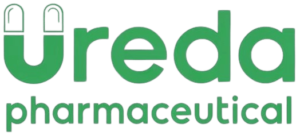In the highly regulated pharmaceutical sector, adherence to Current Good Manufacturing Practices (CGMP) is non-negotiable. It is a critical safeguard for ensuring patient safety and maintaining product quality. However, regulatory warning letters from the FDA often highlight significant lapses in risk management. These failures expose companies to severe consequences, from product recalls to legal liabilities. This article delves into the nuances of CGMP compliance and explores how robust risk management can serve as the cornerstone of sustainable operations.
1. Understanding the Root Causes of CGMP Violations
1.1 The Role of Quality Management Systems (QMS)
CGMP compliance starts with a well-structured Quality Management System (QMS). A robust QMS identifies, assesses, and mitigates risks. Yet, FDA warnings consistently reveal that many companies fail to establish QMS frameworks capable of detecting potential risks before they manifest as violations.
1.2 Decision-Making Failures and Cultural Issues
Decision-making failures often stem from prioritizing short-term gains over long-term risk mitigation. The “green dashboard” culture—where metrics are manipulated to appear positive—creates blind spots in risk recognition and fosters complacency across organizations.
2. Stakeholder Dynamics in CGMP Compliance
2.1 Suppliers and Their Responsibilities
Suppliers are often the first line of defense in CGMP compliance. They must implement rigorous internal standards while catering to the unique needs of their clients. However, discrepancies in standards between suppliers and customers often lead to compliance gaps.
2.2 Challenges Faced by CDMOs
Contract Development and Manufacturing Organizations (CDMOs) must navigate complex regulatory landscapes, balancing client-specific requirements with internal compliance frameworks. Regulatory inspections place the ultimate accountability for CGMP adherence on CDMOs, regardless of sponsor demands.
2.3 Oversight Responsibilities of Sponsors
Sponsors are responsible for overseeing compliance across their supply chains. However, inadequate oversight or poor communication with suppliers and CDMOs can result in systemic failures that affect the entire production process.
3. The Importance of Quality Agreements
3.1 FDA Guidance on Quality Agreements
The FDA emphasizes the importance of clear, detailed Quality Agreements to define the roles and responsibilities of stakeholders. These agreements serve as the foundation for collaboration and ensure accountability across the supply chain.
3.2 Key Elements of an Effective Quality Agreement
- Clear delineation of QMS responsibilities.
- Defined processes for monitoring critical process parameters.
- Dispute resolution mechanisms to address conflicts between sponsors and CDMOs.
Quality Agreements should be dynamic, regularly reviewed, and updated to reflect changes in regulatory requirements or operational conditions.
4. Audits: A Strategic Tool for Risk Management
4.1 Risk-Based Auditing Approaches
Audits should focus on high-risk areas identified through historical data, incident reports, and industry trends. This prioritization ensures that resources are allocated effectively to mitigate significant risks.
4.2 Expertise in Audit Teams
Auditors should possess multidisciplinary expertise to comprehensively evaluate processes. Teams must include professionals with technical knowledge of CGMP requirements and industry-specific practices.
4.3 Continuous Improvement Through Audits
Audit findings must drive systemic changes. Organizations should treat audits as opportunities for improvement, rather than mere check-the-box exercises.
5. Building a Culture of Risk Awareness
5.1 Transparent Risk Reporting
Encourage open discussions about risks at all organizational levels. Employees should feel empowered to report potential issues without fear of negative repercussions.
5.2 Training for Proactive Risk Management
Comprehensive training programs tailored to specific roles ensure that employees are equipped to identify and address risks effectively.
5.3 Leadership’s Role in Risk Culture
Leadership must set the tone by prioritizing risk management and holding themselves accountable for fostering a proactive compliance culture.
6. Conclusion:
CGMP compliance is a collective responsibility that requires active engagement from suppliers, CDMOs, and sponsors. By addressing systemic failures, strengthening Quality Agreements, and fostering a culture of transparency and accountability, the pharmaceutical industry can achieve not only regulatory compliance but also the highest standards of product quality and patient safety.



